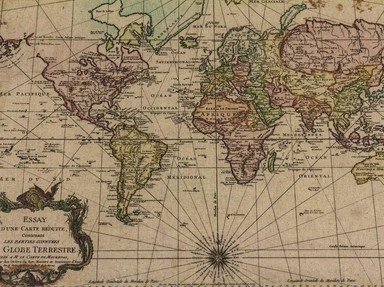Quiz Answer Key and Fun Facts
1. Which country or area used to be known as Abyssinia?
2. The coast of which country or area was known as the Barbary Coast?
3. The area once known as Bohemia became which modern country?
4. If in the Middle Ages one spoke of Cathay, which country was named?
5. Dacia included which of these modern countries?
6. Once there was the colony of German East Africa. After some other changes, part of the area became known as what in 1964?
7. What area was once known as Gold Coast?
8. Which of these was once called Gunnbjörn's Skerries?
9. Which group of islands, when first discovered by Europeans, was named the Ladrones?
10. Where on Earth would you find the country once known as Lusitania?
11. Which area was once called Magna Graecia?
12. The region called Markland could be found where?
13. Which area was once christened New France?
14. What area would you be looking at if you saw New Holland on an old map?
15. Many European countries got their name repeated elsewhere in the world. Where was New Spain situated, in part?
16. Where would you have to go to visit Nova Albion?
17. Which part of Africa was in older times called Nubia?
18. Parthia was a kingdom situated in which present day country?
19. Rupert's Land has been found on the maps in which country or region?
20. Which land was once known as Seres?
21. The country once known as Siam came to be called what?
22. Where can be found the islands once known as the Spice Islands?
23. The name Terra Corte-Realis has been used to denote which country or region?
24. Where could a ship possibly have been headed when going to the Tin Islands?
25. The land of Yeso is nowadays better known under what name?
Source: Author
engels
This quiz was reviewed by FunTrivia editor
spanishliz before going online.
Any errors found in FunTrivia content are routinely corrected through our feedback system.
